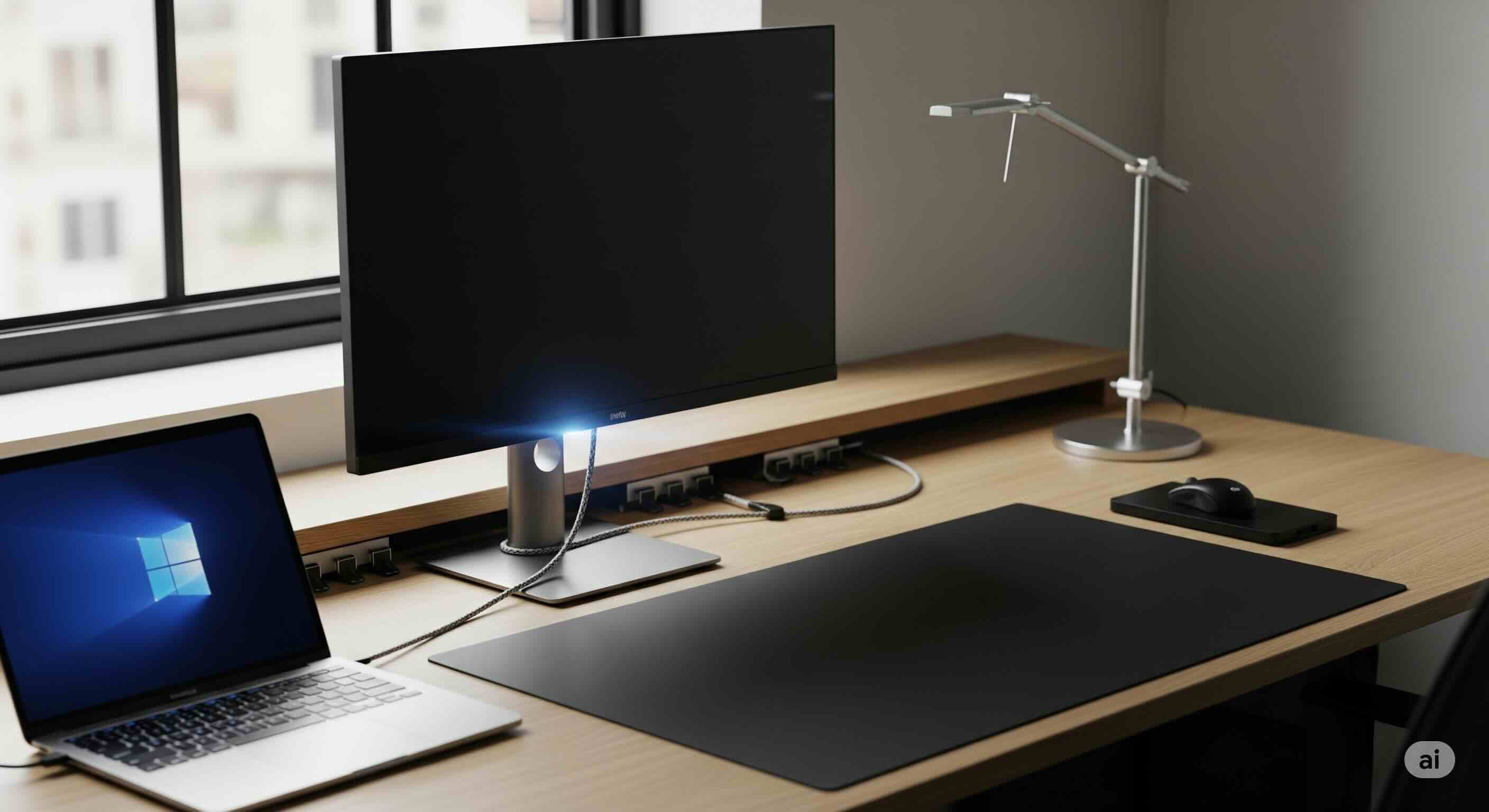Introduction: The Single-Cable Dream vs. The Messy Reality
The promise of USB-C monitors was revolutionary: one cable to handle power, data, and video. It was supposed to be the ultimate solution for a minimalist desk, the killer of the clunky, multi-headed KVM switch. Yet for many, the reality has been a frustrating maze of compatibility issues, power problems, and unexpected cable chaos.
As a display specialist who has tested over 200 USB-C monitor configurations, I've seen firsthand how this dream can dissolve into a troubleshooting nightmare. The "KVM killer" monitor can, paradoxically, make your multi-device setup *more* complicated than the old hardware it was meant to replace.
This guide is the reality check you need. We'll dissect the technical reasons why these setups fail, explore the hidden trade-offs, and give you the expert knowledge to build a clean, efficient workspace that actually works without the headache.
The Foundation: Power Delivery and Cable Quality
The success or failure of any single-cable setup rests on two pillars: the monitor's ability to deliver enough power and the cable's ability to handle the data.
Power Delivery (PD): How Much Do You *Actually* Need?
Your monitor needs to send enough power back to your laptop to charge it effectively. My testing shows you should always choose a monitor with at least 15W more power than your laptop's charger to prevent issues.
| Monitor PD Rating | Best For |
|---|---|
| 65W PD | Most ultrabooks and lightweight laptops (e.g., MacBook Air, Dell XPS 13). |
| 90W-100W PD | More powerful laptops and workstations (e.g., 14" MacBook Pro, Lenovo ThinkPads). |
| 140W+ PD | High-performance gaming laptops and mobile workstations (e.g., 16" MacBook Pro). |
Cable Quality: The Hidden Bottleneck
Not all USB-C cables are created equal. For a monitor connection, you need a high-quality cable that explicitly supports both high-speed data and video.
- Minimum Spec: Look for a USB-C 3.1 Gen 2 (or higher) cable rated for 100W power.
- The Pro Tip: The cable included with your monitor isn't always the best. I've found that investing in a certified Thunderbolt 4 cable often resolves mysterious connectivity issues that users blame on the monitor or laptop.
The Setup: Device Compatibility and Performance Optimization
Even with the right power and cable, performance depends on your device's specific implementation of the USB-C standard.
Laptop Compatibility Matrix
Different devices handle USB-C with varying levels of completeness. Here's a general breakdown:
| Tier | Example Devices | Expected Experience |
|---|---|---|
| Tier 1: Full Compatibility | MacBook Pro, Dell XPS with Thunderbolt, Lenovo ThinkPad X1 | Seamless plug-and-play experience is highly likely. |
| Tier 2: Partial Compatibility | Gaming laptops, budget ultrabooks | May have limited power delivery or require specific drivers. |
| Tier 3: Problematic | Devices with data-only USB-C ports, proprietary charging | Will not work for a single-cable setup. |
Bandwidth: Resolution and Refresh Rate Considerations
The single cable must carry video, data, and power, creating potential bottlenecks. For high resolutions and refresh rates, the connection may require Display Stream Compression (DSC).
- 4K @ 60Hz: The standard for most modern setups, works reliably with a USB-C 3.1 Gen 2 cable.
- 4K @ 120Hz+: Demands a Thunderbolt 3/4 connection and likely uses DSC.
Gamers should always verify their setup's capability by running a refresh rate test to confirm the monitor is delivering the advertised performance over USB-C.
Troubleshooting & Advanced Setups
Even with proper planning, issues can arise. Here are solutions to common problems and tips for more complex configurations.
Common Problems & Solutions
- Symptom: Laptop battery drains while connected.
Solution: Your monitor's PD rating is too low for your laptop, or you're using an underrated cable. Verify your monitor provides at least 15W more power than your laptop's charger. - Symptom: Screen flickers or blacks out intermittently.
Solution: This is almost always a cable issue. Invest in a shorter (max 2-meter) certified Thunderbolt 4 cable. Also, ensure your USB-C and display drivers are up to date. - Symptom: Text looks fuzzy or colors are off.
Solution: The USB-C connection might be compromising signal integrity. Run a text clarity test and a color test to diagnose the issue.
Advanced Setups: Daisy-Chaining and Hubs
For users requiring multiple monitors, Thunderbolt-enabled USB-C monitors can be daisy-chained. However, this requires careful bandwidth management and compatible hardware throughout the chain. Integrating hubs can also introduce complexity. For comprehensive guidance on these multi-device setups, the article on USB-C monitor KVM problems provides detailed strategies.
Conclusion: Mastering the Single-Cable Future
USB-C monitors represent the future of display connectivity, but achieving the promised simplicity requires understanding the underlying complexity. Success depends on matching power requirements, selecting quality cables, ensuring device compatibility, and maintaining the system over time.
The single-cable dream is achievable, but it demands attention to detail. By following the principles in this guide, you can create a reliable, high-performance USB-C monitor setup that delivers on the technology's promise while avoiding the common pitfalls that frustrate many users.
